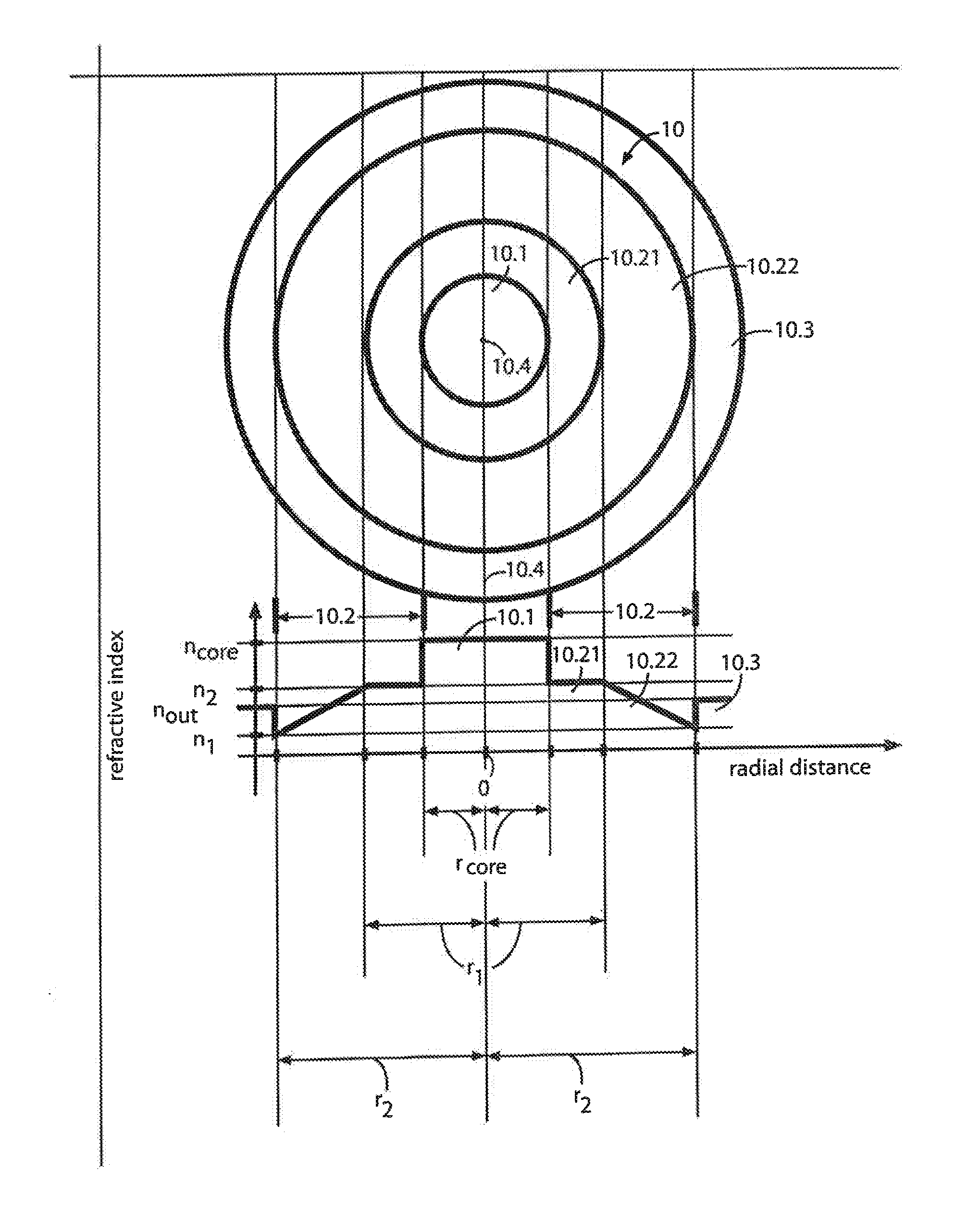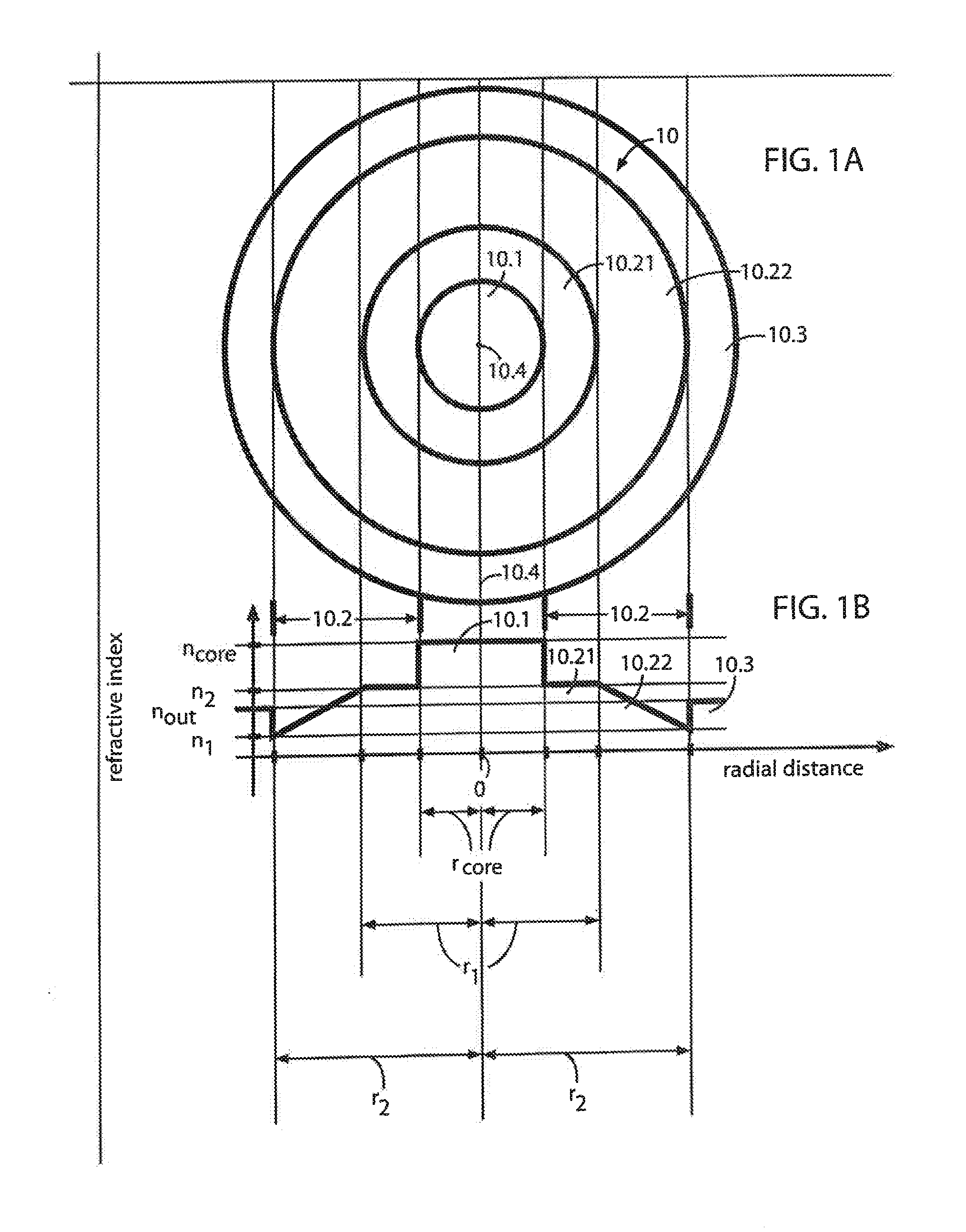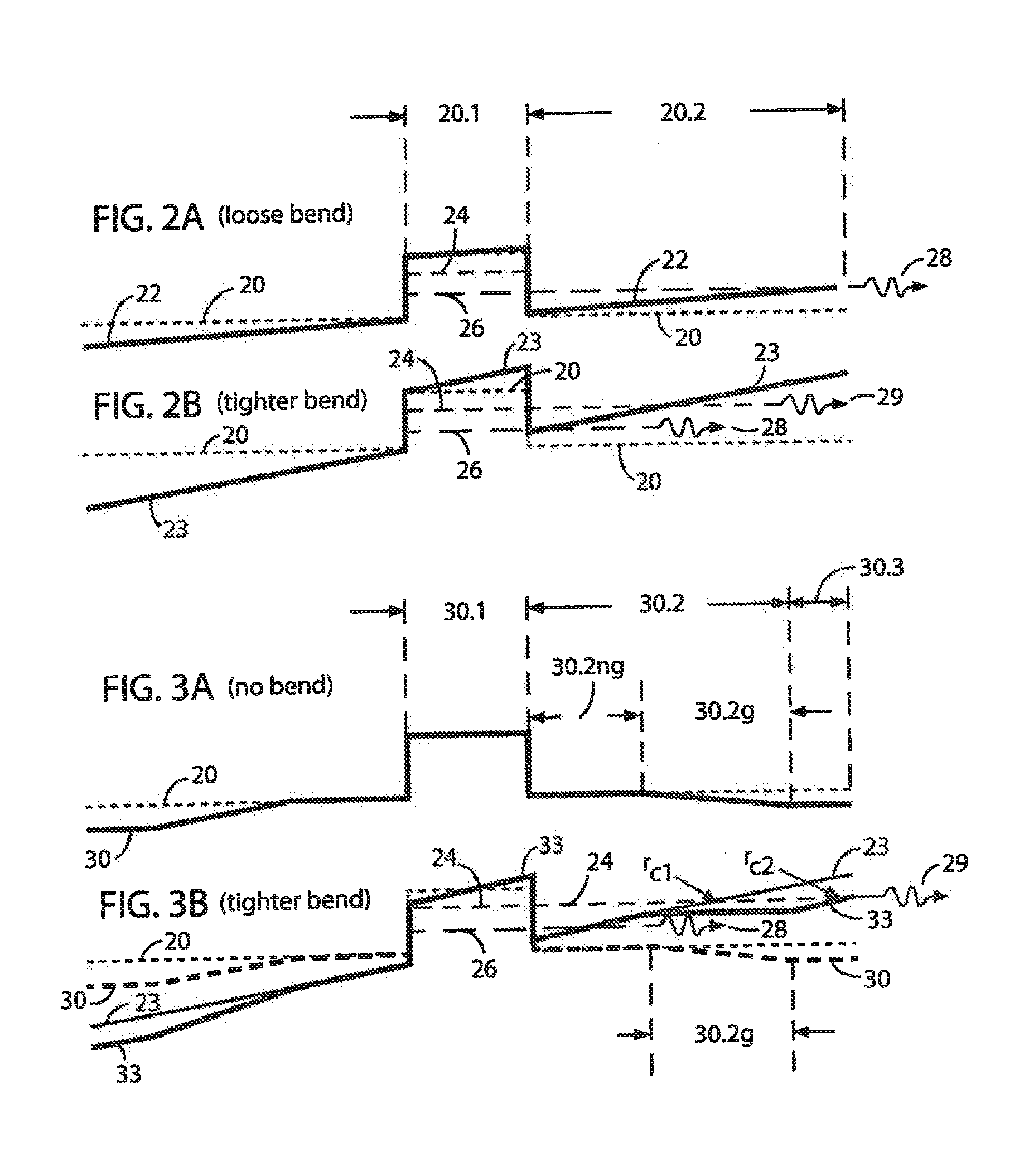Large Mode Area Optical Fibers With Bend Compensation
a technology of optical fibers and bend compensation, applied in the field of large mode area (lma) fibers, can solve the problems of reducing the ability of various fiber designs to selectively suppress homs, limiting the scaling area, and degrading the beam quality, so as to improve system performance, improve beam quality, and high degree of attenuation of homs
- Summary
- Abstract
- Description
- Claims
- Application Information
AI Technical Summary
Benefits of technology
Problems solved by technology
Method used
Image
Examples
examples
[0082]Several ABC fiber designs of the type described above have been simulated with cell spacing L, core diameter Dcore=2r1=5 L (19 cells within the core region) and with inner cladding sizes Di-clad=(r2−r1)=12 L [Di-clad / Dcore=r2r / rcore=2.4] or 18 L [Di-clad / Dcore=r2 / rcore=3.6]. In an illustrative design with L=10, the bend-compensating gradient (slope of the inner cladding region 70.2) corresponded to steps along the x-axis of approximately γxnsil / Rb, or approximately 0.8×10−4, as shown in FIG. 7A, where nsil is the index of pure silica (a good approximation to ncore as indicated earlier) and Rb is assumed to be 15 cm, a fairly large but practical coil size.
[0083]A relatively small core-to-inner cladding contrast was used (for the approximate step-index core profile 70c, FIG. 7B) to enhance leakage of HOMs while provide acceptable calculated bend loss for the fundamental mode of 0.1 dB / m. Our simulations confirmed that very large mode area (Aeff=2160 μm2) is compatible with large...
PUM
 Login to View More
Login to View More Abstract
Description
Claims
Application Information
 Login to View More
Login to View More - R&D
- Intellectual Property
- Life Sciences
- Materials
- Tech Scout
- Unparalleled Data Quality
- Higher Quality Content
- 60% Fewer Hallucinations
Browse by: Latest US Patents, China's latest patents, Technical Efficacy Thesaurus, Application Domain, Technology Topic, Popular Technical Reports.
© 2025 PatSnap. All rights reserved.Legal|Privacy policy|Modern Slavery Act Transparency Statement|Sitemap|About US| Contact US: help@patsnap.com



